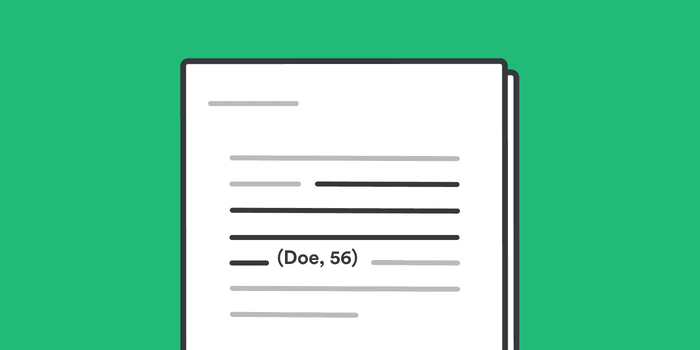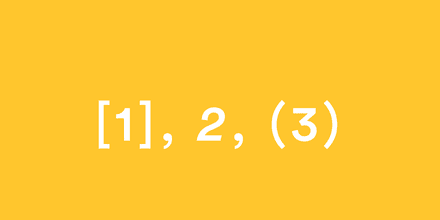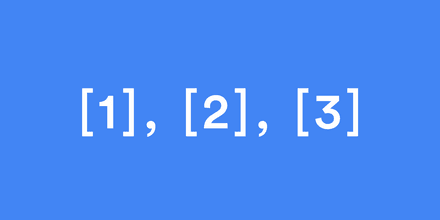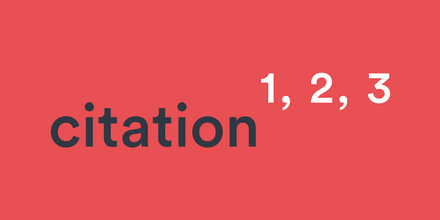
Knowing how to handle parenthetical citations is a key skill that students and researchers need to master. This citation format, also sometimes referred to as an in-text citation, comes into play whenever you need to directly quote or paraphrase someone’s work in your essay or research paper.
In parenthetical citations, the original author or speaker’s words need to be given proper importance through referencing. The reader needs to be able to tell whose work it is, when it was created, and where it was sourced from.
By placing the reference directly into the text itself, the reader is also spared the effort of having to check the footnotes at the end of the paper while reading it.
This guide will be taking a closer look at the best practices for parenthetical citations that you need to know about before you tackle your next paper. The guidelines laid out below will give you all the information and examples you need to use and format a parenthetical reference the right way:
What does a parenthetical citation look like in APA format?
A typical parenthetical citation is made up of a few different parts, including:
- The author’s name
- The year of publication
- The page number
In practice, this will look a little something like this in-text citation example:
Modern architecture systems still rely on dynamic principles (Moseley, 2016).
An alternative way to structure your parenthetical citation, in this case, would be to state it as:
Elhai et al. (2017) found that smartphone use could lead to depression based on current consumption levels (p.75).
There are a few things to be aware of when using parenthetical citations. If there is no known author, for example, does the method of citation need to be adjusted?
The answer is that the basic structure will remain largely the same. When no author can be found, the title of the work and year of publication needs to be included following the format shown above. If the title within the quotation marks is exceptionally long, it can be shortened for the purpose of being an in-text citation.
Check out these APA style resources
🌐 Official APA style guidelines
What does a parenthetical citation look like in MLA format?
The MLA style of parenthetical citation has many parallel elements to the APA format. The only major difference to be aware of is that the page number is cited rather than the date of publishing, and there is no comma separating the pages from the author's last name.
In practice, this would look like the in-text citation example below:
Running regularly can have significant health benefits (Lee et al. 45).
Again if there is no author to be found, a shortened version of the original title or source can be used as a placeholder instead.
Check out these MLA style resources
🌐 Official MLA style guidelines
This table summarizes the main differences between parenthetical citations in APA and MLA:
| Differences | MLA | APA |
|---|---|---|
In-text examples | (Jackson 25) | (Jackson, 2019, p.25) |
Full citations | In MLA, the reference list is referred to as Works Cited. | In APA, the reference list at the end of the paper is titled References. |
Most used for | Social sciences, arts, psychology, sociology and more | Natural sciences, physics, biology, chemistry and more |
In-text citation elements | Author name and page number | Author name, publication year and page number |
Reference list entry example (book) | Haley, Alex. Roots: The Saga of an American Family. Doubleday, 1976. | King, S. (1986). It. New York, NY: Viking Press. |
Where are parenthetical citations used?
We’ve already mentioned that parenthetical references are sometimes known as in-text citations, which tells you exactly where you’ll need to add your sources. No matter which citation style you are using, these rules will apply.
The majority of parenthetical citations are placed within the paragraph that contains the direct quote, but this is not the only place that they need to be noted down. Your in-text citations will still need to be added to the final Reference list found at the end of your essay or paper as a bibliographical citation.
The state of paraphrasing
Let’s talk about what happens when you’ve taken information from a source and rephrased it in your own words instead of using a direct quote. How do parenthetical citations apply in this situation and what guidelines should you be aware of?
To start with, it’s important to bear in mind that the original author or source still needs to be cited even if you use a paraphrased version of their work. Taking the examples from the MLA section above, let’s see how this would look in action:
Incorrect running technique has been linked to lower back injuries (Greco et al. 1796).
Be sure not to skip this step if you are paraphrasing. Giving fitting credit to your sources when using a direct quotation is one of the backbones of academic writing and honesty, and not doing so hurts both the author and you as the writer of the paper. After all, citing correctly only adds more strength and credibility to your argument or thesis.
What about online sources?
With the academic world becoming increasingly connected to technology, many research journals are now being published exclusively on online platforms. Scholarly journal articles, magazine articles, E-books, and other sources have all gone digital to huge benefit - increased accessibility.
Using an online source can have an impact on how in-text citations are written. Not all of these journals or online articles come with clear page numbers, for example. At the same time, it’s unrealistic to expect the reader to go through the entire source looking for the one point you have referenced.
So what do you do in this situation? You make use of the paragraphs instead. When you’re referencing an electronic source, you can use an abbreviation to highlight the paragraph that you are referring to. Take a look at this example:
The New York Times explored the performance of Amanda Gorman at the inauguration and how she started out in poetry ("Amanda Gorman Captures The Moment, In Verse" par. 10).
Frequently Asked Questions about Parenthetical citations
👩🏽🎓 What is the difference between a parenthetical citation and an in-text citation?
The difference is that the parenthetical citation will feature the author's name and the date of publication in brackets at the end of the sentence. An in-text citation can, on the other hand, use the author's name in the sentence and only add the date of publication in brackets at the end of the sentence.
👩🏿🔬 Where does the parenthetical citation turn into a full citation?
The parenthetical citation always corresponds to a full citation in the 'References' or 'Works Cited' section at the end of the paper. These references are cited in alphabetical order, using the author's last name.
🎨 When should you include a page number in a parenthetical citation?
It's best to use page numbers when you are making use of a direct quote, with a dash being used for page ranges. If you are paraphrasing the wording, you can add the parenthetical citation without page numbers.
📋 What is the purpose of a parenthetical note?
Parenthetical notes indicate to the reader what the original source of the content is when citing research in your paper. This allows them to quickly check the citation and get further background about the point you are making.
📼 Do parenthetical citations go inside the quote?
Put the parenthetical citation immediately after the quote or at the end of the sentence that contains it. You should not put the parenthetical citation inside the quote, or use it to divide two lines of quotations.


